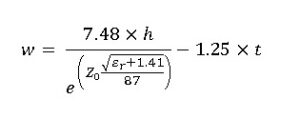
What is the heart of the capacitor ?
The heart of a capacitor is its ability to store electrical energy in the form of an electrostatic field. Capacitors consist of two conductive plates separated by an insulating material called a dielectric. When a voltage is applied across the plates, opposite charges accumulate on each plate, creating an electric field between them. This separation of charges results in the storage of electrical energy, which can be discharged when needed. The heart of the capacitor lies in this fundamental principle of storing and releasing electrical energy through the interaction of electric fields.
A “heart capacitor” is not a standard term in electronics. It seems to be a misinterpretation or a non-standard description. Capacitors are commonly referred to as components that store electrical energy temporarily. Their ability to store energy in an electrostatic field between conductive plates separated by a dielectric is fundamental to their operation in electronic circuits, providing filtering, timing, energy storage, and coupling functions.
The father of the capacitor is often credited to Michael Faraday, a pioneering scientist in the field of electromagnetism and electrochemistry. Faraday conducted significant research and experiments in the 19th century that led to the discovery and understanding of the principles of capacitance. His experiments with Leyden jars and other devices demonstrated the ability to store electrical charge and laid the foundation for the development of modern capacitors used in electrical and electronic applications today.
The main part of a capacitor includes several key components: two conductive plates (usually made of metal) that serve as electrodes, a dielectric material that separates the plates and insulates them from each other, and terminals for connecting the capacitor to an electrical circuit. The conductive plates and dielectric material are crucial elements that determine the capacitance value, voltage rating, and other characteristics of the capacitor. These components work together to store and release electrical energy efficiently in various electronic applications.
The farad (F) is the unit of capacitance, representing the ability of a capacitor to store electrical charge. One farad is defined as the capacitance of a capacitor that, when charged with one coulomb of electrical charge, has a potential difference of one volt across its plates. Capacitors typically have capacitance values much smaller than one farad, often measured in microfarads (µF), nanofarads (nF), or picofarads (pF), depending on their size and construction. Capacitance determines how much charge a capacitor can store for a given voltage, influencing its performance in filtering, timing, and energy storage applications in electronic circuits.








